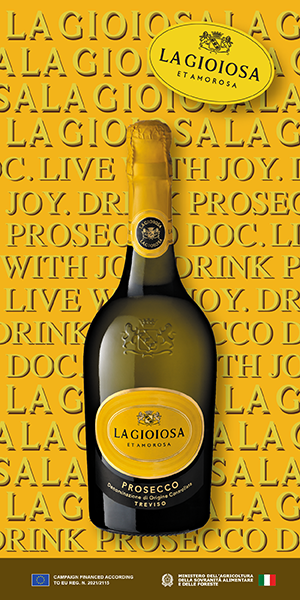Thanks for your kind words! I always really enjoy the WineMaker Conferences and connecting with the readership — it helps me put names and faces to the invisible readership out there and I so much enjoy doing a little “Wine Wizard Live.” So, in an attempt to take up your challenge, here are some snippets of “Wiz-dom” (as you put it, lol) that I do seem to find myself repeating in the columns and in my talks . . . consider it a lovingly-edited “Best of” list from me to you!
Five Golden Rules of Winemaking
- Your wine is only as good as your starting material.
- Acid is the backbone of a wine.
- Learn the science behind the art.
- Listen to your wine. Let the wine tell you the path it needs to tread, don’t force it.
- Don’t take wine, or yourself, too seriously.
• The single most important decision a winemaker can make for a wine is when to pick or selecting raw material if you don’t buy grapes (but I assume many of you do).
• Timing of the harvest will guide you on the path to what the wine will (or won’t) become. This is already laid out before you. The key is knowing how to read which path to take.
Pressing: Press cuts — take them if you can!
Maceration: You get most of your color in five days anyway and I’m not sold on the benefits of an extended maceration, it really just increases your biogenic amines as well as ups your microbial load.
Keys to a Successful Fermentation
- Start with sanitation. Know the difference between cleaning and sanitizing. Cleaning is rote soil removal. Sanitizing is killing unwanted microbes after cleaning removes many of them. An effective sanitizing solution is the following:
3 g sulfite powder
12 g acid
1 gal. (3.8 L) water - You want happy yeast! Nutrition balance is key. If you can get your juice and must tested, shoot for 300 ppm YAN (yeast assimilable nitrogen) using a non-DAP containing yeast nutrient, and only add DAP in small amounts, and not after 5 °Brix.
- Acid adjustment. Do it as early as possible in the must/juice stage. Try to have reds finish out with a pH of 3.45–3.65, whites under 3.60. Be sure to have your wines go through malolactic fermentation unless you will filter and/or hold cold/bottle early.
- Air is your friend during fermentation. Yeast needs oxygen to build their cellular membranes.
- If you add copper, measure it! Don’t just use copper fittings.
- Try fermenting on oak! It can fix color, add sacrificial tannins, and start your wine off on the right footing.
Yeast Considerations
- Don’t overthink it.
- Go native only if conditions allow it.
- I use PDM except for QA23 for Chardonnay.
- If you have lots of separate containers and can predict what your conditions will be, it’s OK to use some fancy specific yeasts.
- A complete fermentation should be your goal. Dealing with a stuck fermentation is hard for home winemakers.
Proper Élevage
- A topped container is a happy container!
- Ullage management, volatile acidity (VA) management, film yeast management . . . these are all key to keeping spoilage microbes from invading and ruining your wine during aging.
- Air is good when you need to rack.
- Don’t let a nasty lees reduction layer accumulate at the bottom of your containers; it can cause H2S (hydrogen sulfide, i.e., rotten egg smell).
- Check free SO2 every month and after every big move.
- Ideally check VA every month when you check free SO2 — this helps you keep track of a wine’s microbial health.
Barrels and Oak Alternatives
- “Winemaker, step away from the barrel!” i.e., don’t over-oak your wine or attempt to hide flaws.
- A full barrel is a happy barrel. Keeping the barrel topped up will help ensure safe, well-aged wine with no oxidation or VA problems over its lifetime.
- Definitely consider the wonderful world of chips, barrel inserts, and staves. They’re ideal for small batches. Radoux, Barrel Mill, G3/Boise Vivelys are all good lines, but most coopers and oak companies will offer non-coopered oak.
Blending Advice
- Never blend a loser, i.e., don’t throw good wine after bad.
- Look for “what’s missing” and try to find wines to fill the slot.
- Don’t be afraid to try 0.5%–5% . . . a little of something can make a big difference.
- Trade wine to create blends with your winemaking friends or club members.
- Don’t be afraid to buy a commercial bottle of wine to get a few mLs to top up your carboy. It’s OK, I won’t tell anyone!
- Explore finishing tannins, arabinols — add sweetness and roundness with non-fermentable sugars.
Fining and Stability
- Time is the best fining agent.
- I don’t tend to fine my wine, especially with animal products. It often just isn’t necessary. My sole exception is for my whites: Bentonite and then use Celstab/CMC to avoid cold stabilization issues. It’s a game changer!
Top Rookie Mistakes
- Picking grapes too early or too late.
- Inappropriate must adjustment.
- Not understanding the destructive power of oxygen.
- Not understanding the constructive power of oxygen.
- Keeping inadequate records.
Most importantly: Keep good records, do your bench trials before making additions, and HAVE FUN!




